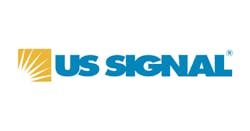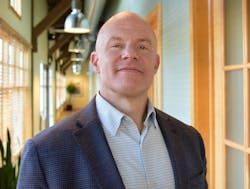US Signal’s OneNeck acquisition expands its nationwide data center footprint, IT network
US Signal has reached a deal to acquire OneNeck from TDS, which will provide the competitive carrier with a greater arsenal of capabilities to address growing data center and cloud service demands from its business customer base.
According to the two companies, the acquisition is subject to meeting customary closing conditions and is expected to close in the third quarter of 2024. Terms of the deal were not revealed.
US Signal is acquiring all of OneNeck's operations, including its data centers, cloud hosting, and solutions provider operations.
Michael Ryder, US Signal board chair and co-head of Igneo in North America, said that acquiring the OneNeck assets is “an important step toward fulfilling the company's expansion plans in the U.S. middle market.”
Expanding footprint, services
US Signal’s OneNeck acquisition is tied to the company’s vision of expanding its footprint and service set.
OneNeck’s assets are quite extensive. Headquartered in Madison, Wisconsin, OneNeck provides secure hybrid IT and multi-cloud solutions through data centers in six Western and Midwestern states.
Serving over 1,000 customers across 45 states, OneNeck caters to sectors including banking, education, engineering, food and beverage, government, healthcare, manufacturing, and retail.
Like the new data center it opened in Indianapolis last December, the OneNeck deal is part of a broader effort US Signal is taking to broaden its cloud service set, including managing applications in its data centers or helping to manage the customer's application in a public, private, or hybrid environment.
The acquisition will immediately increase the number of US Signal data centers from nine to 15, quadrupling square footage. It also extends US Signal's footprint to the West Coast with the addition of Phoenix, Arizona; Denver, Colorado; and Bend, Oregon , data centers
Finally, US Signal adds OneNeck's Madison, Wisconsin; Minneapolis, Minnesota; and Des Moines, Iowa markets to its fiber network.
US Signal can also enhance its growing cloud-based product set. The service provider continues to broaden its cloud service set, including managing applications in its data centers or helping to manage the customer's application in a public, private, or hybrid environment.
Previously, US Signal announced a partnership with Cato Networks; US Signal has expanded its service set with Secure Access Service Edge (SASE) and SD-WAN capabilities.
“The SASE rollout on top of our SD-WAN solution is just further emboldened by our vision wrapped around how we marry connectivity in the data center world together through our security umbrella,” said Dan Watts, CEO of US Signal.
From a customer perspective, Watts said that One Neck also brings a “deep knowledge of numerous industries,” including banking, education, engineering, food and beverage, government, healthcare, manufacturing, and retail.
TDS’ fiber benefits
TDS Telecom, which has been expanding its fiber broadband network, also gains something from this deal.
While acquiring OneNeck gives US Signal a more extensive data center and cloud assets footprint, TDS can now focus more on growing its fiber-based broadband network reach.
When it announced the sale of the OneNeck assets, the telco said the proceeds would be used for general corporate purposes, including advancing TDS' fiber program.
"The sale of OneNeck provides additional capital that can be used to support TDS Telecom's fiber program, which includes investing in communities throughout the US with quality broadband connectivity,” said Vicki Villacrez, EVP and CFO of TDS.
TDS continues to progress with its fiber broadband program.
During the first quarter, TDS Telecom reached a critical milestone: exceeding 100,000 residential broadband connections in its expansion markets. TDS ended the quarter with 827,000 marketable fiber service addresses, 49% of which are served by fiber.
“For the past several years,” said Michelle Brukwicki, TDS Telecom senior vice president of finance and CFO, during its first-quarter earnings call, “we’ve made significant investments in our fiber program, and our financial results are starting to reflect the benefits of those investments. Since starting our fiber program, we just delivered our strongest quarter of revenues and profitability.”
For related articles, visit the Data Center Test Topic Center
For more information on optical components and suppliers, visit the Lightwave Buyer’s Guide.
To stay abreast of optical communications technology, subscribe to Lightwave’s Enabling Technologies Newsletter.
About the Author
Sean Buckley
Sean is responsible for establishing and executing the editorial strategy of Lightwave across its website, email newsletters, events, and other information products.




